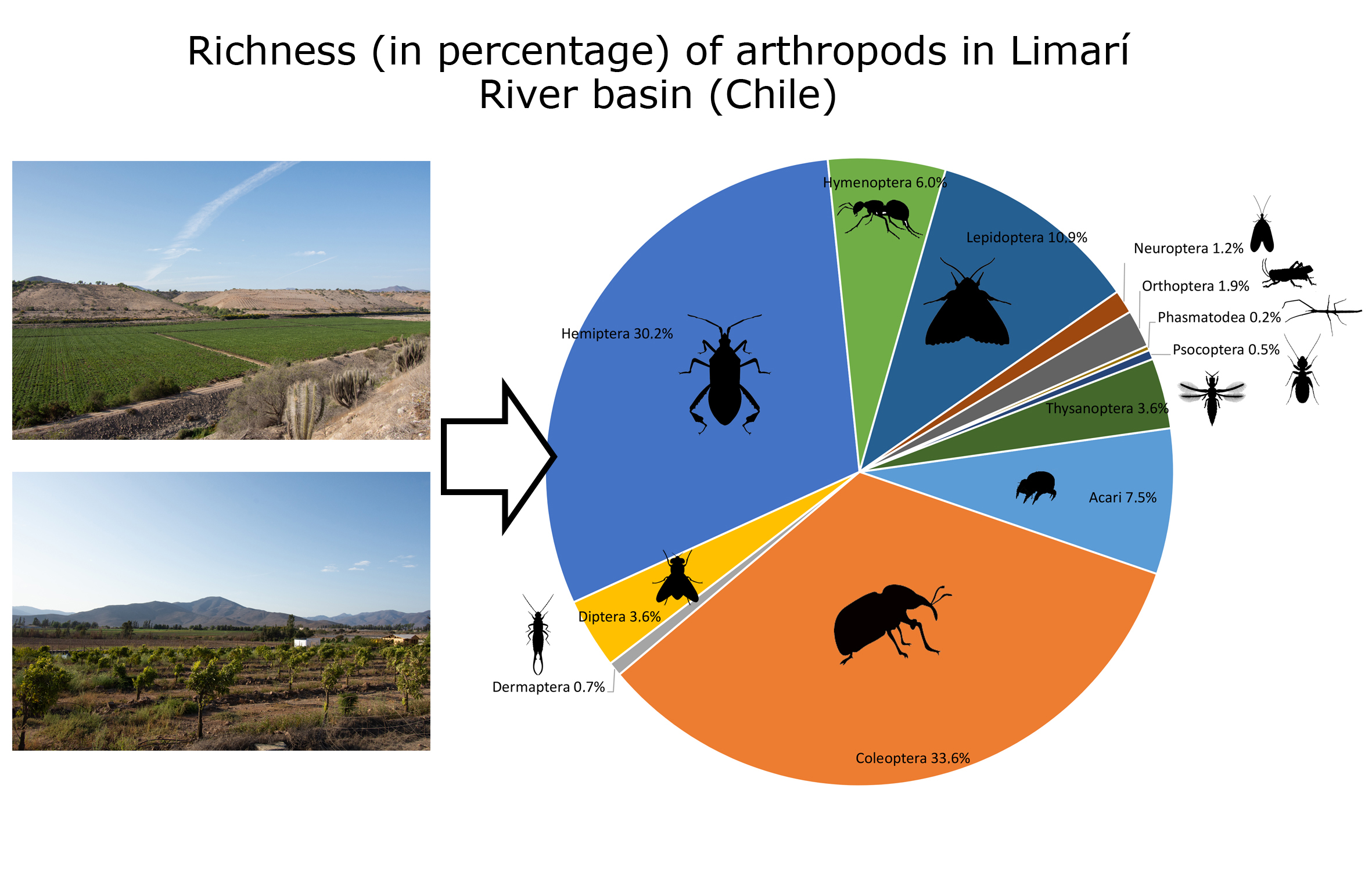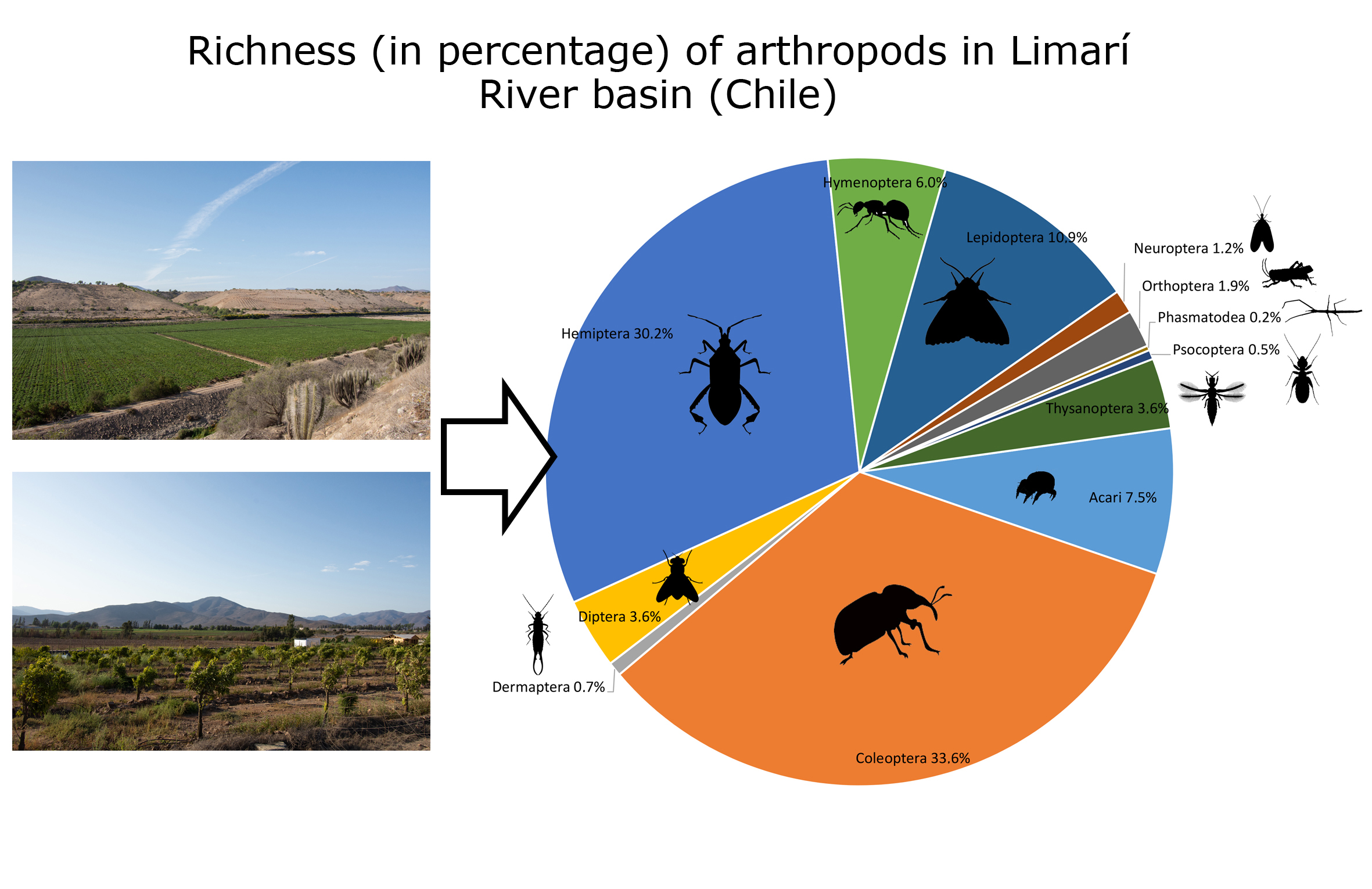Arthropods of the Limarí River basin (Coquimbo Region, Chile): taxonomic composition in agricultural ecosystems
DOI:
https://doi.org/10.48162/rev.39.023Keywords:
taxonomic structure, insects, Norte Chico, agricultural pests, transverse valleys, arid zonesAbstract

The Limarí valley, located in the Coquimbo Region of Chile, is an important agricultural area that is immersed in the transverse valleys of the Norte Chico. In recent decades, the continuous expansion of agriculture towards dry land zones has favored the migration and establishment of potential pests, such as arthropods, that may affect crops or be zoonotic agents. Based on the limited knowledge we have about the arthropod group present in the Limarí basin, our objective is to describe the taxonomic composition of the assemblage of economically important arthropods inhabiting this basin of the semiarid region of Chile. After reviewing historical data, specimen collections, and the specialized literature, a total of 414 arthropod species were recorded. Of the total number of species recorded, 92.5% were insects, the most diverse taxon, with 11 orders. Arachnids, in turn, were represented only by Acari with 31 species. The most widely represented orders of insects were Coleoptera, Hemiptera, and Lepidoptera. Within Coleoptera the most species-rich families were, in decreasing order of importance, Curculionidae, Coccinellidae, Cerambycidae, Scarabaeidae, Chrysomelidae (Bruchinae), Ptinidae, and Bostrichidae; within Hemiptera these were Aphididae, Diaspididae, Coccidae, Pseudococcidae, Pentatomidae and Rhopalidae; and within Lepidoptera they were Noctuidae and Tortricidae. We hope this study serves as a starting point for identifying the most diverse arthropod groups and developing pest monitoring and control programs.
Highlights:
- A large percentage of phytophagous species, mainly belonging to Acari, Lepidoptera, Hemiptera and Coleoptera, were registered in the Limarí basin.
- Some families of agricultural importance (Aleyrodidae, Aphididae, Coccidae, Diaspididae, Margarodidae, Pseudococcidae), were observed in large agricultural crops in the basin (e.g., vines, oranges, mandarins, lemon trees, avocado trees, walnuts, olive trees, vegetable crops).
- A smaller fraction corresponded to the group of predators and parasitoids, mainly represented by Coleoptera (Coccinellidae), Neuroptera (Chrysopidae) and Hymenoptera (Braconidae, Encyrtidae, Ichneumonidae, Platygastridae, Signiphoridae).
- The richness and spatial records of arthropods were mostly concentrated between the city of Ovalle and the estuary of Punitaqui - the areas with most intense agricultural activity in the Limarí basin.
Downloads

Downloads
Published
How to Cite
Issue
Section
License

This work is licensed under a Creative Commons Attribution-NonCommercial-ShareAlike 3.0 Unported License.
Aquellos autores/as que tengan publicaciones con esta revista, aceptan las Políticas Editoriales.










.jpg)




